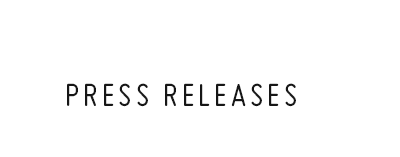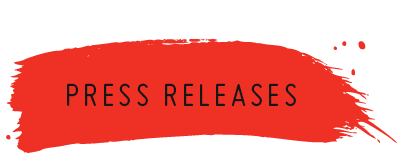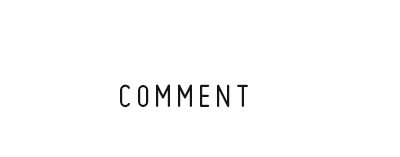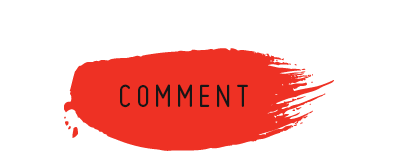Contiweb installs first remoistener in France at ISIPRINT
June 26, 2023 – Contiweb, a specialist manufacturer of web-handling equipment and provider of integrated technical solutions for web offset printing, web inkjet printing and packaging production, has announced the installation of the first Contiweb remoistener in France at the Estimprim group’s ISIPRINT printing plant.
Since February, the Digital Fluid Applicator (DFA) system, sold by Ricoh and installed inline with the RICOH PRO VC70000 web inkjet press, has offered ISIPRINT the possibility of remoistening paper, thereby preventing problems associated with uncontrolled reabsorption of moisture.
With around thirty employees, ISIPRINT specialises in printing, die-cutting and mailing books and magazines in short and medium runs. Olivier Guermouh, Managing Partner of Estimprim and ISIPRINT, explains: “We produce magazines and books for major publishers, ranging from 100 to 1,500 copies. Although our printing is of a high quality, we were looking to improve the finished product, which was affected by the defects inherent in rotary inkjet printing. Coated paper tended to curl or change format slightly, and this was visible on the inside pages which, as it regained moisture, protruded from the cover.
Curling and shrinkage are common problems with web inkjet printing. Drying ink on printed paper requires a high temperature to evaporate the moisture in the ink. But this also causes the substrate to dry out. Paper with a low moisture content is likely to break and crack. And being hygroscopic, it also has a tendency to reabsorb moisture, resulting in curling, wavy edges and variations in format.
After studying the solutions available on the market and observing a European colleague’s DFA system, ISIPRINT was won over by the technical qualities and ease of installation of Contiweb’s equipment. The DFA was therefore installed inline with the RICOH PRO VC70000 web inkjet press in February.
Compatible with all digital web inkjet presses, Contiweb’s DFA mixes tap water with a surfactant (silicone oil optional) and applies it via steel contact rollers mechanically pressed against the paper web. Fabric sleeves around the rollers ensure even moisture distribution and remoistening can be applied independently to each side of the web.
Placed inline between the printer and the rewinder, and directly supplied with running water, the Contiweb DFA is very simple to install. “We then indicate the quantity of water required for a print run, depending on the type of paper and ink load. Very little maintenance is required,” explains Guermouh.
“Since we’ve been using the DFA, we haven’t had any problems with humidity. The inside pages retain their original format, and curling has been considerably reduced. We can now offer high-quality colour printing with the RICOH PRO VC70000 inkjet press, without any restrictions on the type of paper we use. Thanks to Contiweb’s DFA, we have significantly improved the quality of our products,” concludes the printer.
-
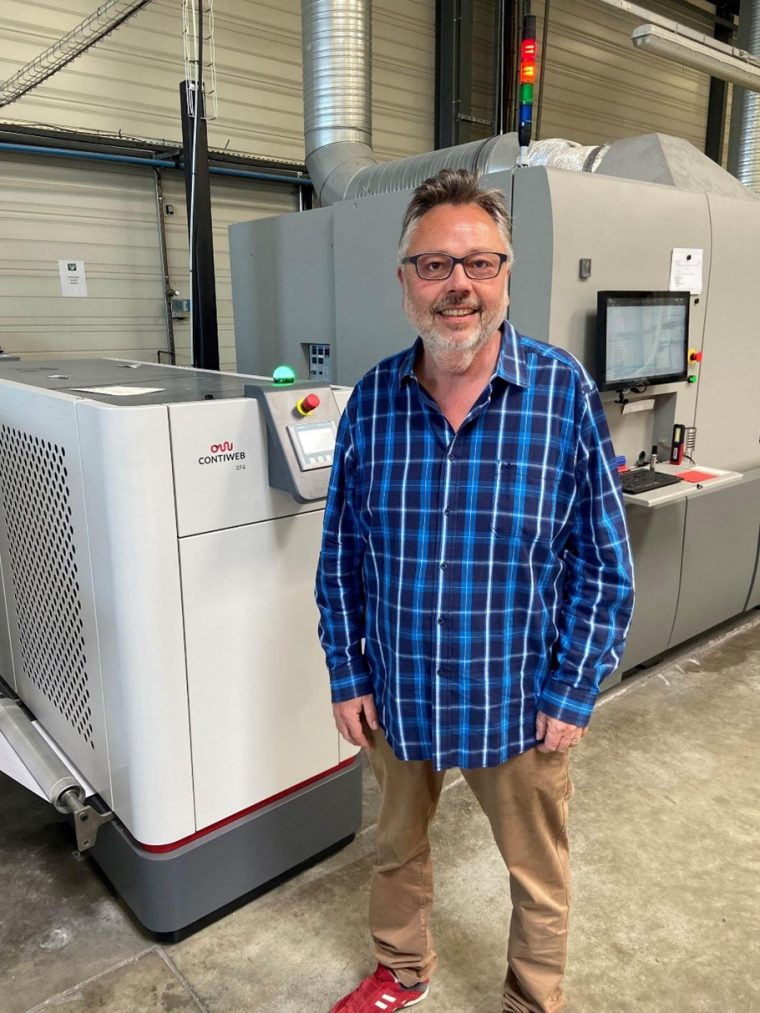 Since we've been using the Contiweb DFA, we haven't had any moisture-related problems," says Olivier Guermouh, Managing Partner of Estimprim and ISIPRINT
Since we've been using the Contiweb DFA, we haven't had any moisture-related problems," says Olivier Guermouh, Managing Partner of Estimprim and ISIPRINT
Click here to download 300dpi images
Contiweb installe son premier ré-humidificateur en France chez ISIPRINT
26 juin 2023 — Contiweb, spécialiste des équipements de séchage et de manutention de bande et fournisseur de solutions tech-niques intégrées pour l’impression sur rotatives offset, les emballages et l’impression digitale, annonce l’installation du premier réhumidificateur Contiweb en France chez l’imprimerie ISIPRINT du groupe Estimprim.
Depuis février, le système Digital Fluid Applicator (DFA), vendu par Ricoh et installé en ligne avec la presse jet d’encre rotative RICOH PRO VC70000, offre à ISIPRINT la possibilité de réhumidifier le papier, prévenant ainsi les problèmes liés à une réabsorption incontrôlée de l’humidité.
Comptant une trentaine de salariés, l’imprimerie ISIPRINT s’est spécialisée dans l’impression, le fa-çonnage et le routage de livres et magazines à petits et moyens tirages.
Olivier Guermouh, directeur général associé d’Estimprim et d’ISIPRINT, explique : « Nous réalisons des magazines et des livres pour de grands éditeurs allant de 100 à 1 500 exemplaires. Bien que notre impression soit de qualité, nous cherchions à améliorer le produit fini qui était affecté par les défauts inhérents aux presses jet d’encre rotatives. Les papiers couchés avaient tendance à gondoler ou à légèrement changer de format, ce qui était visible sur les pages intérieurs qui, en reprenant leur humidité, dépassaient de la couverture ».
Le gondolage et la rétractation sont des problèmes courants de l’impression rotative à jet d’encre. Le séchage de l’encre sur le papier imprimé nécessite une température élevée afin d’évaporer l’humidité de l’encre. Mais cela entraine également le dessèchement du support. Un papier à faible teneur en hu-midité est susceptible de se casser et de se fissurer. Et étant hygroscopique, il aura également tendance à réabsorber l’humidité, entrainant des ondulations, des bords gondolés et des variations de formats.
Après avoir étudié les solutions disponibles sur le marché et observé le DFA chez un confrère euro-péen, ISIPRINT a été séduit par les qualités techniques et la facilité d’installation de l’équipement de Contiweb. Le DFA a donc été mis en place en ligne avec la presse jet d’encre rotative RICOH PRO VC70000 en février.
Compatible avec toutes les presses numériques rotatives, le DFA de Contiweb mélange de l’eau du robinet à un tensioactif (en option, de l’huile de silicone) et l’applique via des rouleaux de contact en acier pressés mécaniquement contre la bande de papier. Des manchons en textile entourent ces rou-leaux afin de garantir une répartition uniforme de l’humidité. La réhumidification peut être appliquée indépendamment de chaque côté de la bande.
Placé entre la sortie de l’imprimante et l’enrouleur et directement alimenté en eau courante, le DFA de Contiweb est très simple à installer. « Ensuite, nous indiquons la quantité d’eau nécessaire pour un tirage, en fonction du type de papier et de la charge d’encre. Très peu d’entretien est nécessaire », précise M. Guermouh.
« Depuis que nous utilisons le DFA, nous n’avons plus aucun problème lié à l’humidité. Les pages intérieures conservent leur format initial et le gondolage a considérablement diminué. Nous proposons aujourd’hui sans restriction de supports papier une impression couleur haute qualité avec la presse jet d’encre RICOH PRO VC70000. Grâce au DFA de Contiweb, nous avons nettement amélioré la qua-lité de nos produits”, conclut l’imprimeur.
-
 « Depuis que nous utilisons le Contiweb DFA, nous n’avons plus aucun problème lié à l’humidité », Olivier Guermouh, directeur général associé d'Estimprim et d’ISIPRINT.
« Depuis que nous utilisons le Contiweb DFA, nous n’avons plus aucun problème lié à l’humidité », Olivier Guermouh, directeur général associé d'Estimprim et d’ISIPRINT.
Click here to download 300dpi images
Contiweb installiert seinen ersten Wiederbefeuchter in Frankreich bei ISIPRINT
- Juni 2023 – Contiweb, ein spezialisierter Hersteller von Trocknungs- und Web-Handlingsystemen, Anbieter von integrierten technischen Lösungen für die Bereiche Rollenoffset- und Rolleninkjetdruck, sowie der Herstellung von Verpackungen, gibt die Installation des ersten Contiweb-Wiederbefeuchters in Frankreich bei der Druckerei ISIPRINT der Estimprim Gruppe bekannt.
Seit Februar bietet der von Ricoh vertriebene Digital Fluid Applicator (DFA), der inline mit der Rolleninkjetdruckmaschine RICOH PRO VC70000 installiert wurde, ISIPRINT die Möglichkeit, das Papier wiederzubefeuchten und so Problemen vorzubeugen, die durch unkontrollierte Wiederaufnahme von Feuchtigkeit entstehen können.
Die Druckerei ISIPRINT mit etwa 30 Mitarbeitern hat sich auf den Druck, die Weiterverarbeitung und den Versand von Büchern und Zeitschriften in kleinen und mittelgroßen Auflagen spezialisiert.
Olivier Guermouh, geschäftsführender Gesellschafter von Estimprim und ISIPRINT, erklärt: „Wir produzieren Magazine und Bücher für große Verlage in Auflagen von 100 bis 1.500 Exemplaren. Obwohl unser Druck qualitativ hochwertig war, suchten wir nach Möglichkeiten, das Endprodukt zu verbessern, das von den typischen Mängeln der Rolleninkjetdruckmaschinen betroffen war. Beschichtetes Papier neigte dazu, sich zu wellen oder das Format leicht zu verändern, was man an den Innenseiten sehen konnte: Wenn die Seiten ihre Feuchtigkeit wieder aufnahmen, ragten sie über den Einband hinaus.“
Wellen und Wachsen sind häufige Probleme beim Tintenstrahl-Rotationsdruck. Das Trocknen der Tinte auf dem bedruckten Papier erfordert eine hohe Temperatur, damit die Feuchtigkeit aus der Tinte verdampft. Das führt jedoch auch dazu, dass das Material austrocknet. Papier mit einem niedrigen Feuchtigkeitsgehalt ist anfällig für Brüche und Risse. Und da es hygroskopisch ist, neigt es auch dazu, Feuchtigkeit wiederaufzunehmen, was zu Rollen, gewellten Kanten und Formatabweichungen führt.
Nach der Untersuchung der auf dem Markt verfügbaren Lösungen und Beobachten des DFA bei einem europäischen Kollegen war ISIPRINT von den technischen Qualitäten und der einfachen Installation der Anlage von Contiweb überzeugt. Der DFA wurde daher im Februar inline mit der Rollen-Tintenstrahldruckmaschine RICOH PRO VC70000 installiert.
Der DFA von Contiweb ist mit allen digitalen Rolleninkjetdruckmaschinen kompatibel. Er mischt Leitungswasser mit einem Tensid (optional Silikonöl) und trägt es über Kontaktwalzen aus Stahl auf, die mechanisch gegen die Papierbahn gepresst werden. Textilmanschetten umschließen diese Walzen, um eine gleichmäßige Verteilung der Feuchtigkeit zu gewährleisten. Die Wiederbefeuchtung kann unabhängig auf jeder Seite der Bahn angewendet werden.
Der DFA von Contiweb wird zwischen dem Druckerausgang und dem Aufwickler platziert und direkt mit fließendem Wasser versorgt, er ist also sehr leicht zu installieren. „Dann geben wir an, wie viel Wasser für einen Druck benötigt wird, abhängig von der Papiersorte und der Tinte. Es ist nur sehr wenig Wartung erforderlich“, so Guermouh.
„Seitdem wir den DFA verwenden, haben wir keine Probleme mit der Feuchtigkeit mehr. Die Innenseiten behalten ihr ursprüngliches Format bei und die Welligkeit hat sich deutlich verringert. Wir bieten heute einen hochwertigen Farbdruck mit der Rolleninkjetdruckmaschine RICOH PRO VC70000 ohne Einschränkung des Papiermaterials an. Mit dem DFA von Contiweb haben wir die Qualität unserer Produkte deutlich verbessert“, schließt Guermouh.
-
 Seitdem wir den DFA von Contiweb verwenden, haben wir keine Probleme mehr mit Feuchtigkeit“, Olivier Guermouh, geschäftsführender Gesellschafter von Estimprim und ISIPRINT.
Seitdem wir den DFA von Contiweb verwenden, haben wir keine Probleme mehr mit Feuchtigkeit“, Olivier Guermouh, geschäftsführender Gesellschafter von Estimprim und ISIPRINT.
Click here to download 300dpi images
Contiweb installa il suo primo riumidificatore in Francia da ISIPRINT
26 giugno 2023 — Contiweb, produttore specializzato in attrezzature per l’asciugatura e la movimentazione delle bobine e fornitore di soluzioni tecniche integrate per la stampa offset a bobina, packaging e stampa digitale annuncia l’installazione del suo primo riumidificatore in Francia presso la tipografia ISIPRINT del Gruppo Estimprim.
Da febbraio, il sistema Digital Fluid Applicator (DFA), venduto da Ricoh e installato in linea con la rotativa inkjet RICOH PRO VC70000, consente a ISIPRINT di riumidificare la carta, evitando così i problemi legati al riassorbimento incontrollato dell’umidità.
Con una trentina di dipendenti, la tipografia ISIPRINT è specializzata nella stampa, il confezionamento e l’invio di libri e riviste di piccola e media tiratura.
Olivier Guermouh, Direttore generale associato di Estimprim e ISIPRINT, spiega: “Produciamo riviste e libri per i principali editori, da 100 a 1.500 copie. Sebbene la nostra stampa fosse di qualità, volevamo migliorare il prodotto finito, che era viziato da difetti inerenti le rotative a getto d’inchiostro. La carta patinata tendeva a ondularsi o a cambiare leggermente nel formato, il che era visibile nelle pagine interne che, tornando umide, sporgevano dalla copertina”.
L’ondulazione e la ritrazione sono problemi comuni con la stampa rotativa a getto d’inchiostro. L’essiccazione dell’inchiostro sulla carta stampata richiede una temperatura elevata per far evaporare l’umidità, ma ne consegue anche l’essiccazione del supporto. La carta con un basso tenore di umidità è soggetta a rotture e crepe. Essendo igroscopica, tende poi a riassorbire l’umidità, con conseguenti ondulazioni, bordi arricciati e variazioni di formato.
Dopo aver studiato le soluzioni disponibili sul mercato e aver osservato il DFA di un collega europeo, ISIPRINT è stata sedotta dalle qualità tecniche e dalla facilità di installazione delle attrezzature di Contiweb. Quindi, il DFA è stato allestito in linea con la stampante RICOH PRO VC70000 in febbraio.
Compatibile con tutte le rotative digitali, il DFA di Contiweb mescola l’acqua di rubinetto con un tensioattivo (in via opzionale, olio di silicone) e lo applica tramite rulli di contatto in acciaio premuti meccanicamente contro la striscia di carta. I rulli sono circondati da manicotti in tessuto per garantire la distribuzione uniforme dell’umidità. La riumidificazione può essere applicata indipendentemente su entrambi i lati della striscia.
Posizionato tra l’uscita della stampante e l’avvolgitore e alimentato direttamente con acqua corrente, il DFA di Contiweb è molto semplice da installare. “Poi indichiamo la quantità di acqua necessaria per una tiratura, a seconda del tipo di carta e della carica di inchiostro”. Basta un minimo di manutenzione”, afferma Guermouh.
“Da quando utilizziamo il DFA non abbiamo più problemi legati all’umidità. Le pagine interne conservano il formato originale e l’ondulazione è diminuita in modo significativo. Oggi offriamo senza restrizioni supporti di carta per una stampa a colori di alta qualità con la pressa per la stampa a getto d’inchiostro RICOH PRO VC70000. Grazie al DFA di Contiweb, abbiamo migliorato notevolmente la qualità dei nostri prodotti”, conclude il tipografo.
-
 Da quando utilizziamo il DFA di Contiweb non abbiamo più problemi legati all’umidità”, Olivier Guermouh, Direttore generale associato di Estimprim e ISIPRINT
Da quando utilizziamo il DFA di Contiweb non abbiamo più problemi legati all’umidità”, Olivier Guermouh, Direttore generale associato di Estimprim e ISIPRINT
Click here to download 300dpi images
Contiweb instala su primer rehumidificador en Francia en ISIPRINT
26 de junio de 2023 — Contiweb, fabricante especializado en equipos de secado y porta rollos de rotativas y proveedor de soluciones técnicas integradas para la impresión offset en bobina, el envasado y la impresión digital, ha anunciado la instalación del primer rehumidificador Contiweb de Francia en la planta de impresión ISIPRINT del grupo Estimprim.
Desde febrero, el sistema Digital Fluid Applicator (DFA), comercializado por Ricoh e instalado en línea con la prensa rotativa de inyección de tinta RICOH PRO VC70000, ofrece a ISIPRINT la posibilidad de rehumedecer el papel, evitando así problemas relacionados con la reabsorción incontrolada de humedad.
Con una treintena de empleados, ISIPRINT está especializada en la impresión, estampación y envío por correo de tiradas cortas y medianas de libros y revistas.
Olivier Guermouh, director general asociado de Estimprim e ISIPRINT, explica: “Producimos revistas y libros para grandes editoriales, desde 100 a 1500 ejemplares. Aunque nuestra impresión era de gran calidad, queríamos mejorar el producto final, que se veía afectado por los defectos inherentes a las prensas rotativas de inyección de tinta. El papel couché tendía a curvarse o a cambiar ligeramente de forma, lo que era visible en las páginas interiores que, al recuperar la humedad, sobresalían de la cubierta”.
La curvatura y la expansión son problemas habituales de la impresión rotativa por chorro de tinta. La tinta húmeda impresa en el papel requiere altas temperaturas para que la humedad de la tinta se evapore, sin embargo, esto también provoca que el sustrato se seque. Un papel con un bajo contenido de humedad tiende a romperse y agrietarse. Además, al ser higroscópico, también tendrá tendencia a reabsorber la humedad, lo que provocará ondulaciones, bordes curvados y variaciones en el formato.
Después de estudiar las soluciones disponibles en el mercado y observar el DFA con un colega europeo, ISIPRINT quedó convencida por las cualidades técnicas y la facilidad de instalación de los equipos de Contiweb. Por ello, en febrero se instaló el DFA con la prensa rotativa de inyección de tinta RICOH PRO VC70000.
El DFA de Contiweb, compatible con todas las prensas digitales rotativas, mezcla agua del grifo con un surfactante (opcionalmente aceite de silicona) y lo aplica mediante rodillos de contacto de acero presionados de manera mecánica contra la banda de papel. Mangas textiles rodean estos rodillos para garantizar una distribución uniforme de la humedad. La rehumidicación puede aplicarse a cada lado da banda de manera independiente.
El Contiweb DFA, colocado entre la salida de la impresora y el rebobinador y, alimentado directamente con agua corriente, es muy fácil de instalar. “A continuación, indicamos la cantidad de agua necesaria para una tirada, en función del tipo de papel y de la carga de tinta. Casi no necesita mantenimiento”, detalla el Sr. Guermouh.
“Desde que utilizamos el DFA, no hemos tenido ningún problema relacionado con la humedad. Las páginas interiores conservan su forma original y se ha reducido considerablemente la curvatura. Ahora ofrecemos impresión en color de alta calidad con la prensa de inyección de tinta RICOH PRO VC70000, sin restricciones en cuanto al tipo de papel utilizado. Gracias al DFA de Contiweb, hemos mejorado notablemente la calidad de nuestros productos”, concluye el profesional de la impresión.
-
 Desde que utilizamos el Contiweb DFA, no hemos tenido ningún problema relacionado con la humedad", Olivier Guermouh, director general asociado de Estimprim e ISIPRINT.
Desde que utilizamos el Contiweb DFA, no hemos tenido ningún problema relacionado con la humedad", Olivier Guermouh, director general asociado de Estimprim e ISIPRINT.
Click here to download 300dpi images
